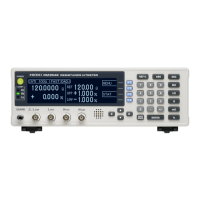Appendix 9 Zero Adjustment
A20
If zero adjustment is difficult when using self-made probe to measure
When you perform zero adjustment using a self-made probe to do measurement,
connect the tip of the self-made probe as shown in Table 1 (a). However, if such
connection is difficult, you can try the following methods.
If DC resistance meter is used
The main purpose of performing zero adjustment is to remove offset of the
measurement instrument. For this reason, the value to be deducted as a result of
zero adjustment almost does not depend on the probe. Therefore, after using the
standard probe to make the connection shown in Table 1 (a) and performing zero
adjustment, you can replace it with a self-made probe to measure with offset
removed from the measurement instrument.
If AC resistance meter is used
In addition to removing offset of the measurement instrument, another main purpose
of performing zero adjustment is to remove influence of the probe shape. For this
reason, when performing zero adjustment, try as much as possible to set the form of
the self-made probe close to the measurement state. Then, you need to make the
connection as shown in Table 1 (a) and perform zero adjustment.
However, if a HIOKI product is used, even in AC resistance measurement, if the
required resolution exceeds 100
, the same zero adjustment method used in DC
resistance meter may be sufficient.

